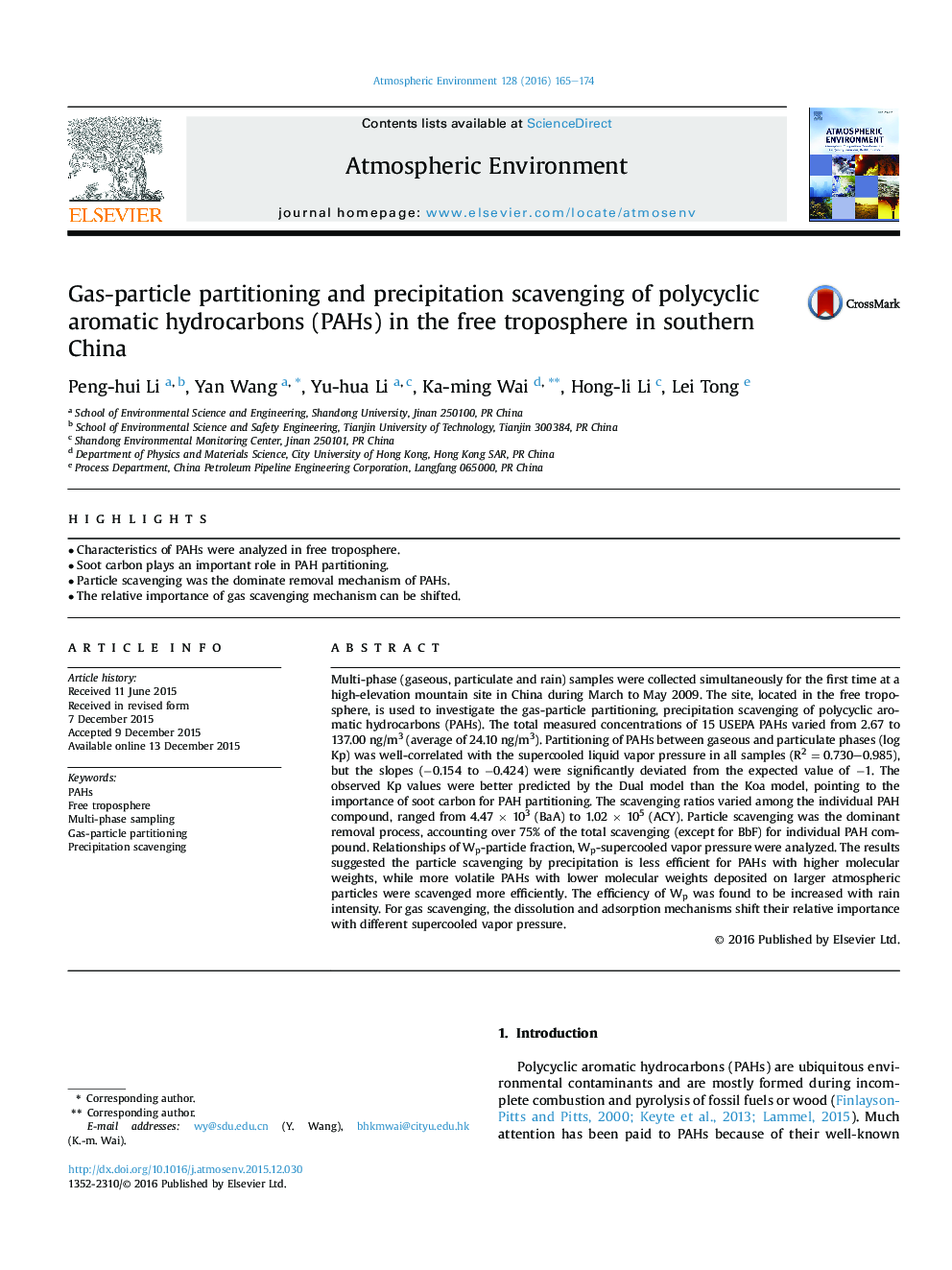| Article ID | Journal | Published Year | Pages | File Type |
|---|---|---|---|---|
| 6336738 | Atmospheric Environment | 2016 | 10 Pages |
Abstract
Multi-phase (gaseous, particulate and rain) samples were collected simultaneously for the first time at a high-elevation mountain site in China during March to May 2009. The site, located in the free troposphere, is used to investigate the gas-particle partitioning, precipitation scavenging of polycyclic aromatic hydrocarbons (PAHs). The total measured concentrations of 15 USEPA PAHs varied from 2.67 to 137.00 ng/m3 (average of 24.10 ng/m3). Partitioning of PAHs between gaseous and particulate phases (log Kp) was well-correlated with the supercooled liquid vapor pressure in all samples (R2 = 0.730-0.985), but the slopes (â0.154 to â0.424) were significantly deviated from the expected value of â1. The observed Kp values were better predicted by the Dual model than the Koa model, pointing to the importance of soot carbon for PAH partitioning. The scavenging ratios varied among the individual PAH compound, ranged from 4.47 Ã 103 (BaA) to 1.02 Ã 105 (ACY). Particle scavenging was the dominant removal process, accounting over 75% of the total scavenging (except for BbF) for individual PAH compound. Relationships of Wp-particle fraction, Wp-supercooled vapor pressure were analyzed. The results suggested the particle scavenging by precipitation is less efficient for PAHs with higher molecular weights, while more volatile PAHs with lower molecular weights deposited on larger atmospheric particles were scavenged more efficiently. The efficiency of Wp was found to be increased with rain intensity. For gas scavenging, the dissolution and adsorption mechanisms shift their relative importance with different supercooled vapor pressure.
Related Topics
Physical Sciences and Engineering
Earth and Planetary Sciences
Atmospheric Science
Authors
Peng-hui Li, Yan Wang, Yu-hua Li, Ka-ming Wai, Hong-li Li, Lei Tong,
